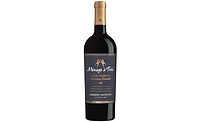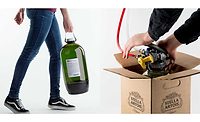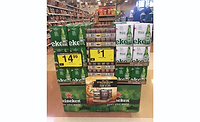End caps, side stackers, coolers, and displays are among the terms used to describe the placement of products in multi-outlets and convenience stores. To help drive sales, retailers are placing varying beverage products, including still waters, energy drinks and ready-to-drink (RTD) coffees and carbonated soft drinks, in coolers near cash registers to drive impulse purchases.
Yet, when looking at a retailer’s category management and merchandising strategy, Blaine Ross, president of the Minneapolis-based Category Management Association (CMA), notes the challenges faced when balancing burgeoning SKUs with the type of merchandise/larger volume beverages in market today.
“It all comes down to ‘space and retailer prioritization,’” Ross explains. “Understanding each retailer’s category strategy is critical — what categories get displays, cooler or increased shelf space and why? What are the measures of success that each retailer is looking for?
“Categories with high penetration and volume/velocity warrant larger displays in high traffic areas of the store — perimeter and lobby,” he continues. “Other beverage categories find success by being displayed with other high cross category purchase frequency — offering the shopper a solution-based purchase, and increasing the retailers’ overall transaction.”
Balancing variety and inventory
Scott Moore, senior vice president of national accounts off premise for Southern Glazer’s Wine & Spirits, Miami and Dallas, suggests that retailers are reducing item assortment as a tactic to ensure that the most sought-after items remain in stock.
“Having the data to ensure the right mix of the best SKU choices is key to confirming the right balance of variety and inventory,” Moore says. “Convenience sections are increasing in space with the addition of can and premium box wines. Drink solutions on the spirits side of the business are popular as most retailers are tying in mixers and recipes to their displays.
“Additionally, ‘trade up’ within the mixer category is in play with the expansion of brands like Fever Tree and Zing Zang,” he continues.
Brian Sudano, managing partner at New York-based Beverage Marketing Corporation (BMC), is seeing greater display presence at store entrances dominated by major players taking a portfolio approach versus a specific beverage category. “Much of this is done with cross merchandising and production promotions,” he explains. “Bottled water receives full case merchandising placement near entrances and exits, highlighting price discounts.
“Juices and juice drinks look for alternative refrigerated sections in store to generate greater impulse,” he continues. “Beer, wine and spirits seek end-aisle displays, cross-merchandising opportunities with snacks and other strategies to boost sales.”
As category management, merchandising and marketing becomes more sophisticated, retailers are embracing a more comprehensive approach that encompasses data, analytics and shoppers’ insights. In fact, CMA’s Ross notes that the association has established a second organization — the Shopper Insight Management Association (SIMA) — designed to help retailers and suppliers win in the competitive consumer packaged goods (CPG) industry.
“Today Category Management and Shopper Insights’ professionals are dynamically linked due to the emergence of new industry concepts that require a broader view of the strategic decision-making framework,” Ross explains.
Success can be measured by an organization’s commitment to five strategic areas: people, data, analytic tools, analytic process and presentation, he adds.
Virtual reality and near-field communication (NFC) are emerging technologies slowly being adopted by consumers, BMC’s Sudano says.
“Near field promotions are very prevalent in trying to direct consumers to product,” he says. “Virtual reality is used on websites but less in store — although some liquor channels are more advanced.”
Southern Glazer’s Moore concurs that wine and spirit brands are swiftly adopting the reality of the digital retail space. “Consumer offers and the overall shopping experience are being enhanced online,” he says. “We are now formulating the best approach for the online virtual shelf and the online planner.”
Health and wellness, convenience and SKU proliferation have “raised the bar” for information and insight requirements needed to sway retailers, BMC’s Sudano says. “Retailers are more interested in how to drive their overall business versus your product only. Companies today need a more holistic approach. No longer can a 40 share brand demand 40 percent of space if having that space does not grow retailer sales or attract new customers.”
Particularly during the busy summer months, consumers are searching for convenience packs including canned wines and RTD cocktails, Southern Glazer’s Moore notes.
Displays, particularly those that cross merchandise with beverages and snacks, also attract attention for a brand. Although most displays are optimized for 30 or 60 days, CMA’s Ross notes the importance of ensuring the display stays relevant and captivating for the shopper. He also advises that retailers “mix it up” when it comes to thematic messaging and change the point of sale and promotional offer to increase basket rings. BI




